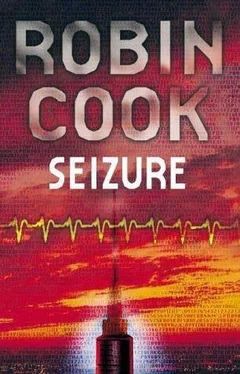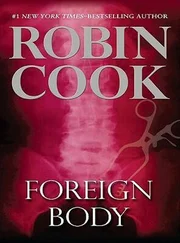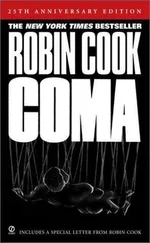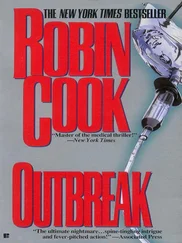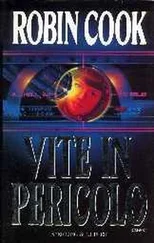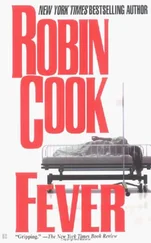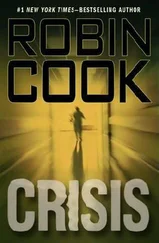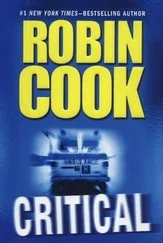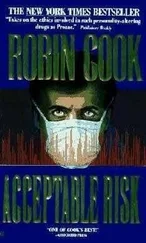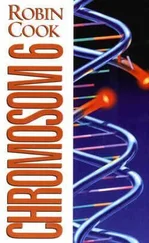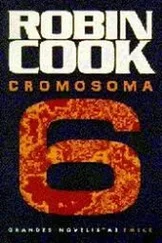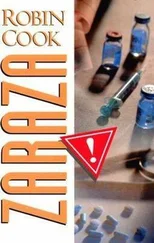Leaving Daniel to deal with business matters, Stephanie went into the laboratory. She called hello to Peter, who was seated before one of the dissecting microscopes. While Stephanie and Daniel had gone to Washington, he’d stayed behind to keep all the company’s experiments going.
Stephanie unloaded her laptop onto the soapstone surface of the particular lab bench she used as her desk; her private office had been sacrificed in the initial downsizing. With Butler’s skin biopsy in hand, she walked over to an operative area of the laboratory. She removed the piece of skin aseptically, minced it, and then placed the minced material in a fresh batch of culture medium, along with antibiotics. When it had been safely stored in an incubator in a T-flask, she returned to the area she used as her desk.
“How did things go in Washington?” Peter called out. He was a slightly built fellow who looked like a teenager, despite being older than Stephanie. His most distinguishing characteristics were ratty clothes and a shock of blond hair that he wore in a ponytail. Stephanie had always thought he could be a poster boy for the hippie-dominated sixties.
“Washington was okay,” Stephanie answered vaguely. She and Daniel had decided not to tell the others about Senator Butler until after the fact.
“So, we’re still in business?” Peter asked.
“It looks that way,” Stephanie replied. She plugged in her laptop and turned it on. A short time later, she was connected to the Internet.
“Is the money coming from San Fran?” Peter persisted.
“You’ll have to ask Daniel,” Stephanie said. “I try to stay clear of the business side of things.”
Peter got the implied message and went back to his work.
Stephanie had been eager to look into the issue of the Shroud of Turin from the moment Daniel had suggested she take it on as her initial contribution to the Butler project. She’d thought about beginning that morning after her shower and before Butler’s skin biopsy had arrived but had decided against it because connecting to the Internet with a modem was agonizingly slow now that she was spoiled with CURE’s broadband connection. Besides, she thought she’d no sooner get herself involved and have to break off. Now she had the rest of the afternoon.
Calling up the Google search engine, she entered SHROUD OF TURIN and clicked on the SEARCH button. She had no idea what to expect. Although she remembered sketchy references to the shroud when she was a child and still a practicing Catholic as well as something about its being declared a fake after carbon dating when she was in her first year of graduate school, she’d not thought of the relic in years and assumed other people felt similarly. After all, how excited could one get about a thirteenth-century forgery? But a blink of the eye later, when the Google search was completed, she knew she was wrong. Amazed, she found herself staring at the number of results: more than 28,300!
Stephanie clicked on the first result, called the Shroud of Turin website, and for the next hour found herself totally absorbed by the extent of information available. On the very first introductory page, she read that the shroud was “the single most studied artifact in human history”! With her relative lack of familiarity with the shroud, she found that a surprising statement, especially considering her general interest in history; her undergraduate major had been chemistry, but she’d had a minor in history. She also read that a number of experts felt strongly that the question of the shroud’s authenticity as a first-century artifact had not been settled by the carbon dating results. As a woman of science, and knowing the precision of carbon dating, she could not understand how anyone could hold such an opinion and was eager to find out. But before she did, she used the website to examine photographs of the shroud that were presented in both positive and negative format.
Stephanie learned that the first person to photograph the shroud in 1898 had been startled by the images being significantly more obvious in the negative, and it was the same for her. In the positive the image was faint, and looking at it and trying to see the figure reminded her of one of her youthful summer pastimes: attempting to see faces, people, or animals in the infinite variations of cumulus clouds. But in the negative, the image was striking! It was clearly that of a man who had been beaten, tortured, and crucified, which begged the question of how a medieval forger could have anticipated the development of photography. What had appeared on the positive as mere blotches were now agonizingly real rivulets of blood. Glancing back at the positive image, she was surprised that the blood had even retained its red color.
On the main menu of the Shroud of Turin website, Stephanie clicked on a button labeled FREQUENTLY ASKED QUESTIONS. One of the questions was whether DNA testing had ever been performed on the shroud. With excitement, Stephanie clicked on the question. In the answer provided, she learned that Texas researchers had found DNA in the bloodstains, although there were some questions about the provenance of the sample tested. There were also questions raised about how much DNA contamination could have been left by all the people who had touched the shroud over the centuries.
The Shroud of Turin website also included an extensive bibliography, and Stephanie turned to it eagerly. Once again, she was amazed at its extent. With her curiosity now piqued and as a lover of books, she went over a number of the titles. Leaving the shroud’s website, she called up a bookseller’s, which produced a hundred titles, many of which were the same as those in the shroud’s website. After reading some of the reviews, she selected a few of the books that she wanted to have immediately. She was particularly drawn to those by Ian Wilson, an Oxford-educated scholar, who was cited as presenting both sides of the controversy concerning the shroud’s authenticity even though he was convinced it was real, meaning not only was it a first-century artifact-it was the burial cloth of Jesus Christ!
Picking up the phone, Stephanie called the local bookstore. She was rewarded by learning that the store had one of the titles she was interested in. It was The Turin Shroud: The Illustrated Evidence by Ian Wilson and Barrie Schwortz, a professional photographer who had been part of an American team that had extensively studied the shroud in 1978. Stephanie asked for the book to be put aside with her name on it.
Returning to the bookseller’s website, she ordered a few more of the shroud books to be delivered overnight. With that accomplished, she stood up and took her coat off the back of her chair. “I’m heading out to the bookstore,” she called over to Peter. “I’m going to pick up a book on the Shroud of Turin. Out of curiosity, what do you know about it?”
“Hmmm,” Peter voiced, as he screwed up his face as if in deep thought. “I know the name of the city where it’s kept.”
“I’m serious,” Stephanie complained.
“Well, let’s put it this way,” Peter said. “I’ve heard of it, but it’s not that it comes up in conversation too often with me and my buddies. If I were pressed, I’d say it’s one of those objects the medieval church used to fan the religious fires to keep the collection boxes full, like pieces of the true cross and saints’ fingernails.”
“Do you think it’s real?”
“You mean Jesus’ burial cloth?”
“Yeah.”
“Hell, no! It was proved to be a fake ten years ago.”
“What if I told you it was the most investigated artifact in human history?”
“I’d ask you what you’d been smoking lately.”
Stephanie laughed. “Thank you, Peter.”
“What are you thanking me for?” he asked, obviously confused.
Читать дальше
